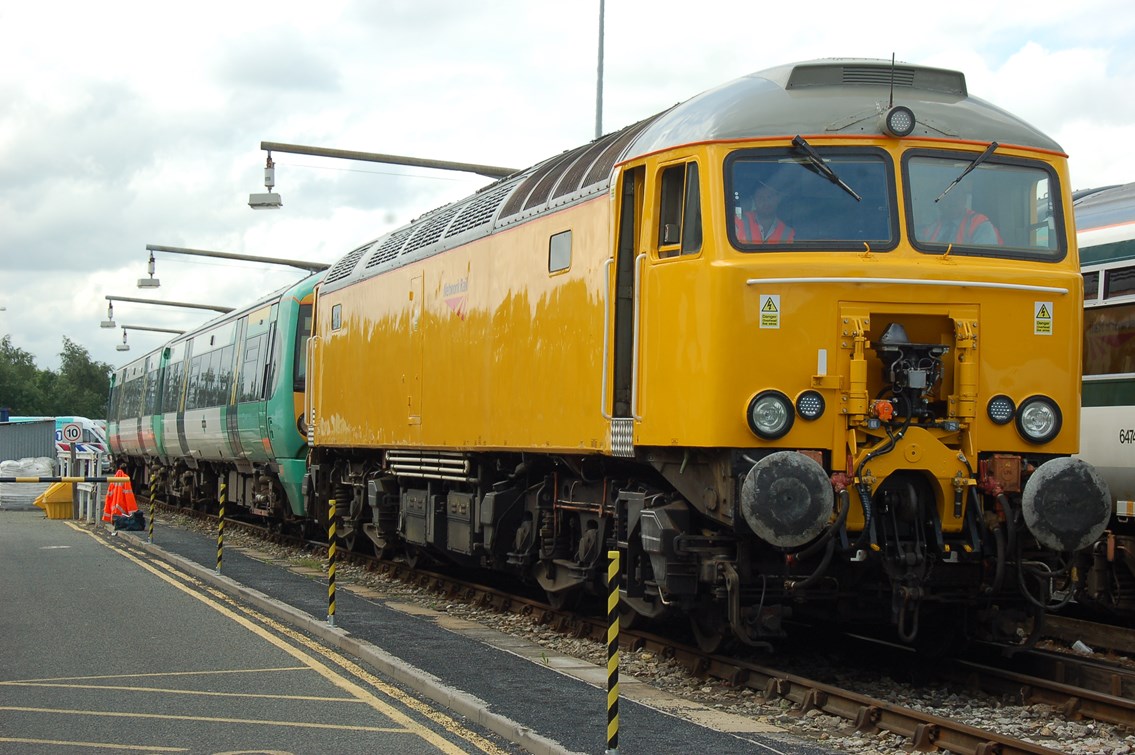Thursday 6 Jun 2013
Rescuing trains gets easier
- Region & Route:
- | Southern
Adaptions have been made to Network Rail’s fleet of Class 57s in the south to allow them to rescue failed electric multiple units.
Testing of the six 57/3 locomotives is now complete following a modification of the brake interface units. This will allow the drivers to operate their brakes and those of the failed train together. The brake interface unit also operates the safety interlocks on most units, which means broken-down units can be removed at normal line speed.
Mick Stewart, senior fleet engineer, National Delivery Service, said: “We can now quickly move units that are stranded – for example, when the third rail network is disabled, if there’s snow and ice, or where there’s been a mechanical failure.
“The 57s are also powerful enough to haul a 12-car EMU – another EMU wouldn’t be able to do that.
“Before, failed units had to be rescued using whatever train was available, powerful enough, and that could be coupled to the unit.
“Route controls would have to source the rescue vehicle, find competent fitters and get them to the depot to collect the emergency adaptor coupler before the recovery train could go out – all of which took valuable time.”
A rescue involving one of the modified class 57s would involve its driver, the driver of the failed unit, plus competent staff, such as a mobile operations manager or a train operating company fitter, on either side of the coupling. This can be achieved in 15 minutes – a large time saving over previous procedures.
Other possible uses for the class 57s include routinely moving EMUs between works for servicing.
Notes to editors
The Class 57/3s will normally be employed on snow and ice treatment trains during autumn and winter but will be able to rescue trains when needed.
The location of the locomotives will depend on which operator wins the Network Rail haulage contract, up for renewal later this summer. It is intended they will be used across the three southern routes – Wessex, Sussex and Kent.
The locomotives are on lease to Network Rail and can be driven by drivers attached to any company – subject to having the necessary competencies.
Contact information
Passengers / community members
Network Rail national helpline
03457 11 41 41
Latest travel advice
Please visit National Rail Enquiries
Journalists
Network Rail press office - South East route
020 3357 7969
southeastroutecomms@networkrail.co.uk
About Network Rail
We own, operate and develop Britain's railway infrastructure; that's 20,000 miles of track, 30,000 bridges, tunnels and viaducts and the thousands of signals, level crossings and stations. We run 20 of the UK's largest stations while all the others, over 2,500, are run by the country's train operating companies.
Usually, there are almost five million journeys made in the UK and over 600 freight trains run on the network. People depend on Britain's railway for their daily commute, to visit friends and loved ones and to get them home safe every day. Our role is to deliver a safe and reliable railway, so we carefully manage and deliver thousands of projects every year that form part of the multi-billion pound Railway Upgrade Plan, to grow and expand the nation's railway network to respond to the tremendous growth and demand the railway has experienced - a doubling of passenger journeys over the past 20 years.
Follow us on Twitter: @networkrail
Visit our online newsroom: www.networkrailmediacentre.co.uk

